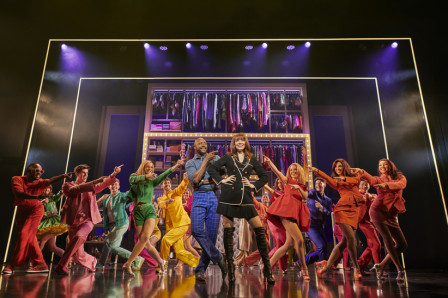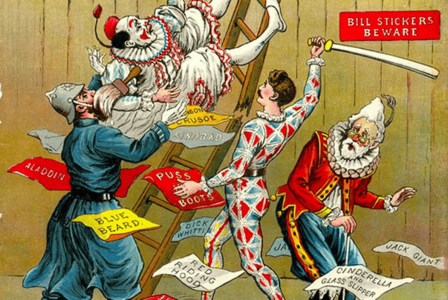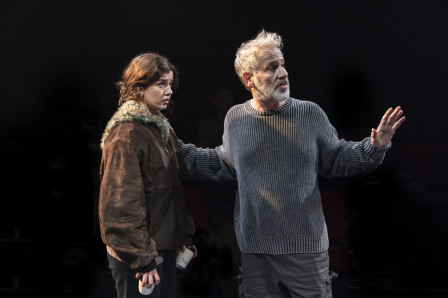What Are the Best Seats in a Theatre?
 Shehrazade Zafar-Arif
24 June, 2025, 11:10
Shehrazade Zafar-Arif
24 June, 2025, 11:10
Choosing the right seat for a night out at the theatre can be stressful. Just like on an airplane, there are good seats and bad seats, and the difference can make or break your night - especially when you have to consider budget, comfort, visibility, and proximity to the stage. But don’t worry, our handy seating guide can help you with this decision.
 Photo by Paolo Chiabrando.
Photo by Paolo Chiabrando.
What are the different seats in a theatre?
- The Stalls: Also known as the orchestra seats, the Stalls are located in the lowest part of the theatre, closest to the stage.
- The Dress Circle: Also called the Royal Circle, Balcony, or Mezzanine, this is the next tier of seating above the stalls, overlooking the stage.
- The Upper Circle: Sometimes called the Grand Circle, these seats are the highest or second highest balcony of the theatre.
- Balcony: Also known as the Gallery, this third-tier balcony can be as much as 100 feet above the stage. Not all theatres have a Balcony.
- Boxes: Also called loges, these are small, private seating areas designed for a limited number of people, usually at the front and side of the auditorium, above the stage.
Which seats offer the best view?
In most theatres, the best seats with the clearest views are typically in the central section of the Stalls, which offer the most immersive experience and intimate proximity to the actors, and the front of the Dress Circle, which offer excellent panoramic views of the stage and set. These tend to be the most expensive seats.
You might think that the closer you sit to the stage, the better your view, but that’s not necessarily true. Sitting in the front row of the Stalls means you’ll constantly be craning your neck to look up at the stage, and may miss some of the action towards the back of the stage.
The Boxes offer a premium experience due to their privacy and intimate proximity to the stage - which is why they were historically the seats favoured by the royal family - but be aware that you’ll have a sidelong view of the stage and will be looking down on the action.
Which seats should you opt for if you’re on a budget?
If you’re on a budget, the back of the Stalls or Dress Circle tend to be cheaper, but bear in mind that they may offer an angled view or slightly restricted views depending on the layout of the theatre.
Seats in the Upper Circle (or Balcony if the theatre has one) also tend to be lower in price, but be warned that they can be very high up, which may make them feel a bit isolated from the action of the play. These seats also tend to have limited legroom.
What does restricted view mean?
Some seats in the house have a restricted view of the stage due to a pillar, safety bar, or overhang from the seats above. This restriction can range from missing an entire chunk of the stage to having to lean around or over an obstruction. These seats tend to be the cheapest, so are worth exploring if you’re on a budget and don’t mind a bit of discomfort.
Which seats are the most comfortable?
If you’re on the taller side, be aware that most theatres, as they were built in the late 19th and early 20th centuries, usually have seating with very little legroom. For your comfort, opt for Stalls seats over Circle and Balcony seats, or go for aisle seats that will allow you to stretch out your legs.
On the flip side, for shorter patrons or children, be aware that most Stalls seats don’t have a steep rake so you may find yourself with an obstructed view if you’re seated behind someone taller. Circle seats have a steeper rake, so you won’t have to worry about being blocked by someone else’s head.
Standing seats - yes or no?
Standing seats are typically cheaper than regular seats, but that doesn’t mean they’re worse. In fact, at immersive performances at the Bridge Theatre or the Globe Theatre, for instance, standing seats allow you to be immersed in the action, and the actors may even address you or involve you in the performance! While this can be a truly unique and special experience, avoid this option if you have trouble standing for extended periods, especially in the Globe’s open-air theatre, where you won’t be able to avoid extreme heat or rainfall.
Every theatre is different
Another thing to bear in mind is that every theatre and venue differs slightly when it comes to seating layout. In larger theatres such as the Palace Theatre and the Theatre Royal Drury Lane, where you sit can make a huge difference. However, in smaller, intimate spaces, such as the Trafalgar Theatre or the Ambassador Theatre, seating is a bit more uniform. Theatres such as the Harold Pinter Theatre and Wyndham’s Theatre have large Circle overhangs that can seriously obstruct your view.
That’s why it’s important to check out the seating plan of the venue you’re visiting, which is usually available on the theatre’s official booking page. And also, don’t forget to…
Check out seat reviews
Although theatres and ticket sellers have an obligation to display if a particular seat has a restriction, it's obvious that some theatres might see 'restricted view' in a very different way from their audiences. As such, before making your decision on which seat to select, you should always check seat reviews on a website like WhichSeats.com, where patrons share details about the comfort levels and visibility of individual seats, even sometimes providing pictures of their view from the seat.
And finally, if you're still unsure what seat to book, you can always contact London Box Office’s customer service team, who will be happy to help you choose the right seat. This way, you know what to expect before finalising your booking, so there are no surprises to ruin your big night at the theatre.
Latest News

 New production images released by THE DEVIL WEARS PRADA
7 November 2025 at 14:09
New production images released by THE DEVIL WEARS PRADA
7 November 2025 at 14:09

 Full cast announced for the World Premiere of HIGH NOON
7 November 2025 at 13:53
Full cast announced for the World Premiere of HIGH NOON
7 November 2025 at 13:53

 Everything You Need To Know About London Palladium's Pantomime
7 November 2025 at 13:52
Everything You Need To Know About London Palladium's Pantomime
7 November 2025 at 13:52

 Review: FATHERLAND at Hampstead Theatre
7 November 2025 at 10:29
Review: FATHERLAND at Hampstead Theatre
7 November 2025 at 10:29